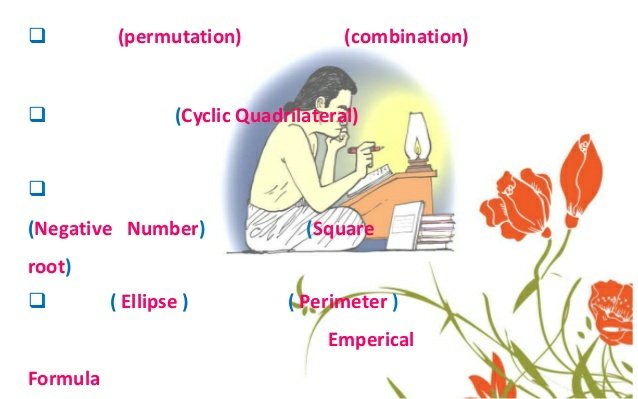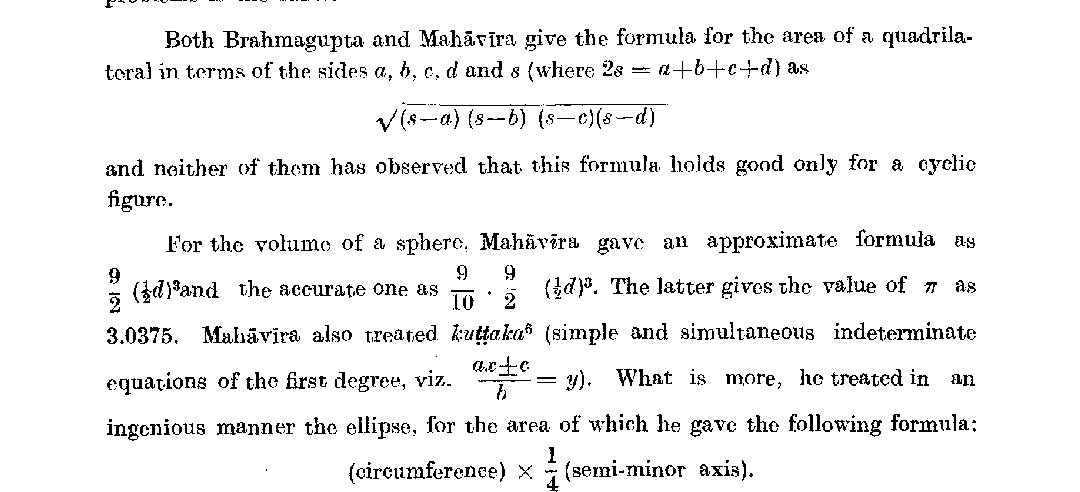
1. Monkey Outrage!
— Billy Bostickson \U0001f3f4\U0001f441&\U0001f441 \U0001f193 (@BillyBostickson) August 17, 2020
The worst treatment was kept for the monkeys. The macaques breed of monkeys are small, relatively light primates, which are often used for animal experiments at LPT. \u2018They are kept in cramped conditions in small cages. https://t.co/6D0yisjd9B
11. Max Planck Monkey Photos (2) pic.twitter.com/0yE9D6iswp
— Billy Bostickson \U0001f3f4\U0001f441&\U0001f441 \U0001f193 (@BillyBostickson) August 17, 2020
More from Billy Bostickson 🏴👁&👁 🆓
1. WIV Research groups (archived pages) for Reference
dsRNA viruses molecular biology
https://t.co/lwrQoo6ygG

2. Emerging Viruses Group
https://t.co/ND56gVGOAn

3. Structural Biology of Viral Genome Replication
https://t.co/wUqc0YIP3X

4. Molecular Biology of hepatitis Viruses & Gene Therapy
https://t.co/snBbxkhNsC

5. Insect Virus Genetic Engineering Lab
https://t.co/S68mVOA2Ob

dsRNA viruses molecular biology
https://t.co/lwrQoo6ygG

2. Emerging Viruses Group
https://t.co/ND56gVGOAn

3. Structural Biology of Viral Genome Replication
https://t.co/wUqc0YIP3X

4. Molecular Biology of hepatitis Viruses & Gene Therapy
https://t.co/snBbxkhNsC

5. Insect Virus Genetic Engineering Lab
https://t.co/S68mVOA2Ob

1. Some useful, albeit not fully developed, critiques of:
“The Origins of SARS-CoV-2: A Critical Review"
https://t.co/C9TyRyqHUr
have just been published here:
https://t.co/qCmzGCzRxn
by members of DRASTIC & others
@angoffinet @BahulikarRahul @MonaRahalkar @gdemaneuf
2. A refreshing contrast to the so-called "expert reactions" found here, including from one of the authors of the review (Prof David Robertson)!
"expert reaction to a preprint reviewing the evidence on the origins of SARS-CoV-2"
https://t.co/6kG6rstweP
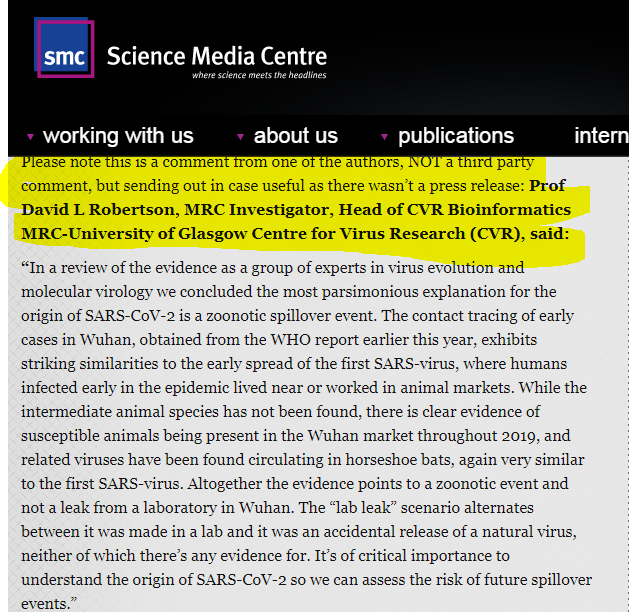
3. Peter Gutierrez points out in his response that 4 of the authors of “The Origins of SARS-CoV-2: A Critical Review”, also wrote “Proximal Origin of SARS-COV-2”.
His critique focuses on:
1. RaTG13
2. Enhanced adaptation to the human host
https://t.co/eW8b2iK5xe
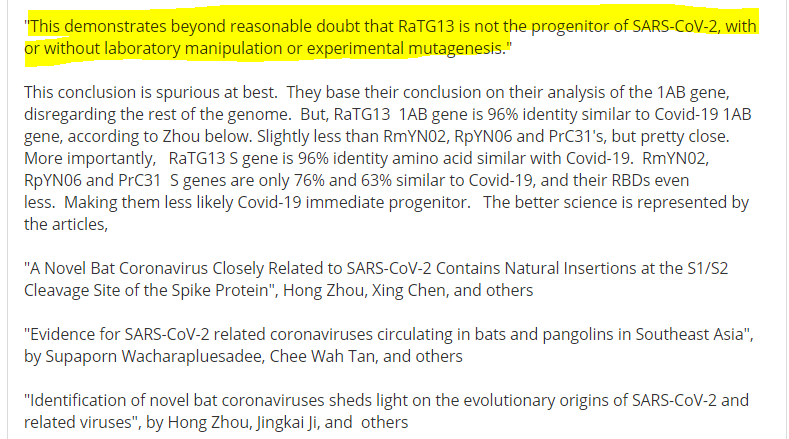
4. As to be expected, Sydney University and its iconic virologist, Eddie Holmes, who is "not available for interview", are crowing over this biased review
https://t.co/xrjpN1NxpO
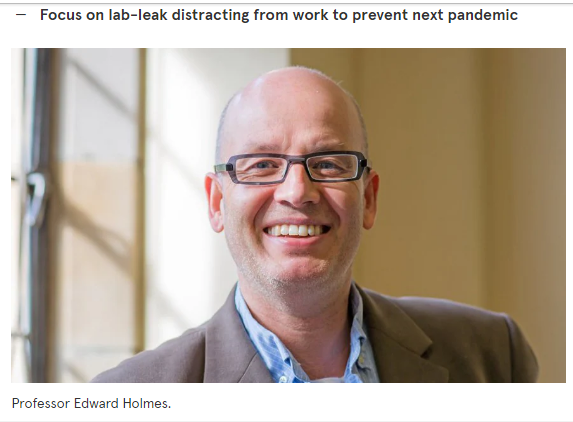
This review contains elementary errors as exposed here:
1. https://t.co/YJ50huifly
one of the authors (Stuart Neil) then claimed
"Didn’t N501Y come up in ACE2 TG mice too?
https://t.co/HscNSEKdrZ

“The Origins of SARS-CoV-2: A Critical Review"
https://t.co/C9TyRyqHUr
have just been published here:
https://t.co/qCmzGCzRxn
by members of DRASTIC & others
@angoffinet @BahulikarRahul @MonaRahalkar @gdemaneuf
2. A refreshing contrast to the so-called "expert reactions" found here, including from one of the authors of the review (Prof David Robertson)!
"expert reaction to a preprint reviewing the evidence on the origins of SARS-CoV-2"
https://t.co/6kG6rstweP

3. Peter Gutierrez points out in his response that 4 of the authors of “The Origins of SARS-CoV-2: A Critical Review”, also wrote “Proximal Origin of SARS-COV-2”.
His critique focuses on:
1. RaTG13
2. Enhanced adaptation to the human host
https://t.co/eW8b2iK5xe

4. As to be expected, Sydney University and its iconic virologist, Eddie Holmes, who is "not available for interview", are crowing over this biased review
https://t.co/xrjpN1NxpO

This review contains elementary errors as exposed here:
1. https://t.co/YJ50huifly
one of the authors (Stuart Neil) then claimed
"Didn’t N501Y come up in ACE2 TG mice too?
https://t.co/HscNSEKdrZ

All your natural origin friends in one place ;)
— Billy Bostickson \U0001f3f4\U0001f441&\U0001f441 \U0001f193 (@BillyBostickson) July 7, 2021
Origins of SARS-CoV-2: A Critical Reviewhttps://t.co/j4A4rtmi8S
via @Topo_Ligio
Fallacy of the "straw mouse", denying evolution in wild type mice, when the claim is actually that it may have "evolved" in hACE2 mice, NOT wild mice. pic.twitter.com/7LCnSAhw6g
1. Messy Thread exploring connections between
@DARPA @doddtra PREDICT & @EcoHealthNYC
What happened to FLIRT?
https://t.co/wgttFlgcP1
EcoHealth Alliance analyzed all airports in the US by assessing how often passengers trickle in from areas with confirmed cases of Zika virus.
2. “I believe this is something that people should know,” said Andrew Huff, vice-president of group, who oversees efforts to forecast the spread of infectious diseases. “If you know where an infectious disease is, you can take precautions.”
Andrew Huff used to run their database

3. Andrew Huff
https://t.co/yqP8NbiN5X
Data papers:
https://t.co/mCdcAMTHNW
FLIRT (Zika)
https://t.co/MyUM3mt6c3
MANTLE https://t.co/dBsFAixRXv
MANTLE
4. GRITS and EcoHealth Alliance and DTRA
Global Disease Warning Software - May 28, 2015
EcoHealth Alliance and its Partners Create Biosurveillance Application with $2.2 million grant from the DTRA to continue the development of disease warning software
Global Rapid Identification Tool System (GRITS) software developed with ProMED, International Society for Infectious Disease, & Kitware
Biosurveillance app that enables infectious disease analysts to monitor textual data sources for infectious disease threats in near real time.
@DARPA @doddtra PREDICT & @EcoHealthNYC
What happened to FLIRT?
https://t.co/wgttFlgcP1
EcoHealth Alliance analyzed all airports in the US by assessing how often passengers trickle in from areas with confirmed cases of Zika virus.
2. “I believe this is something that people should know,” said Andrew Huff, vice-president of group, who oversees efforts to forecast the spread of infectious diseases. “If you know where an infectious disease is, you can take precautions.”
Andrew Huff used to run their database

3. Andrew Huff
https://t.co/yqP8NbiN5X
Data papers:
https://t.co/mCdcAMTHNW
FLIRT (Zika)
https://t.co/MyUM3mt6c3
MANTLE https://t.co/dBsFAixRXv
MANTLE
4. GRITS and EcoHealth Alliance and DTRA
Global Disease Warning Software - May 28, 2015
EcoHealth Alliance and its Partners Create Biosurveillance Application with $2.2 million grant from the DTRA to continue the development of disease warning software
Global Rapid Identification Tool System (GRITS) software developed with ProMED, International Society for Infectious Disease, & Kitware
Biosurveillance app that enables infectious disease analysts to monitor textual data sources for infectious disease threats in near real time.
November 3 - 9, 2019 -Wuhan Institute of Virology
International Training Course on Biosafety Laboratory Management and Technology
1. Daniel Feakes, head of UN Biological Weapons Convention implementation support agency
2. René Courcol, quality control system expert, France's BSL

List of Lecturers with short bios at
November 3 - 9, WIV Training Course: https://t.co/Bsd9yO40JP
YUAN Zhiming Professor, Wuhan Institute of Virology, CAS (Deputy Director)
SONG Donglin, Professor, Wuhan Institute of Virology, CAS ( Deputy Director of Wuhan BSL-4 Laboratory.)
Dr. TONG Xiao Senior Engineer at WIV (Molecular Virology & (HIV) infection, mechanical & vaccine immunology) On-site Manager & Chief engineer for WIV BSL-4 Lab construction, maintenance & biosafety equipment R&D.
Zhengli Shi, Director of WIV Center for Emerging Infectious Diseases, now in charge of scientific activity in BSL3 & BSL4. Viral pathogen discovery through sequencing techniques, wildlife-borne viral pathogens, particularly bat-borne viruses since 2004.
DENG Fei, Principle Investigator in Research Group on Viruses Resources & Biotechnology in WIV, also Director of Microorganisms & Viruses Resource Center.
Graduate of ECUST, went to Great Lakes Forestry Center, Canada in 2001 & Wageningen University, NL to study baculovirus.
International Training Course on Biosafety Laboratory Management and Technology
1. Daniel Feakes, head of UN Biological Weapons Convention implementation support agency
2. René Courcol, quality control system expert, France's BSL

List of Lecturers with short bios at
November 3 - 9, WIV Training Course: https://t.co/Bsd9yO40JP
YUAN Zhiming Professor, Wuhan Institute of Virology, CAS (Deputy Director)
SONG Donglin, Professor, Wuhan Institute of Virology, CAS ( Deputy Director of Wuhan BSL-4 Laboratory.)
Dr. TONG Xiao Senior Engineer at WIV (Molecular Virology & (HIV) infection, mechanical & vaccine immunology) On-site Manager & Chief engineer for WIV BSL-4 Lab construction, maintenance & biosafety equipment R&D.
Zhengli Shi, Director of WIV Center for Emerging Infectious Diseases, now in charge of scientific activity in BSL3 & BSL4. Viral pathogen discovery through sequencing techniques, wildlife-borne viral pathogens, particularly bat-borne viruses since 2004.
DENG Fei, Principle Investigator in Research Group on Viruses Resources & Biotechnology in WIV, also Director of Microorganisms & Viruses Resource Center.
Graduate of ECUST, went to Great Lakes Forestry Center, Canada in 2001 & Wageningen University, NL to study baculovirus.
More from Science
You May Also Like
✨📱 iOS 12.1 📱✨
🗓 Release date: October 30, 2018
📝 New Emojis: 158
https://t.co/bx8XjhiCiB
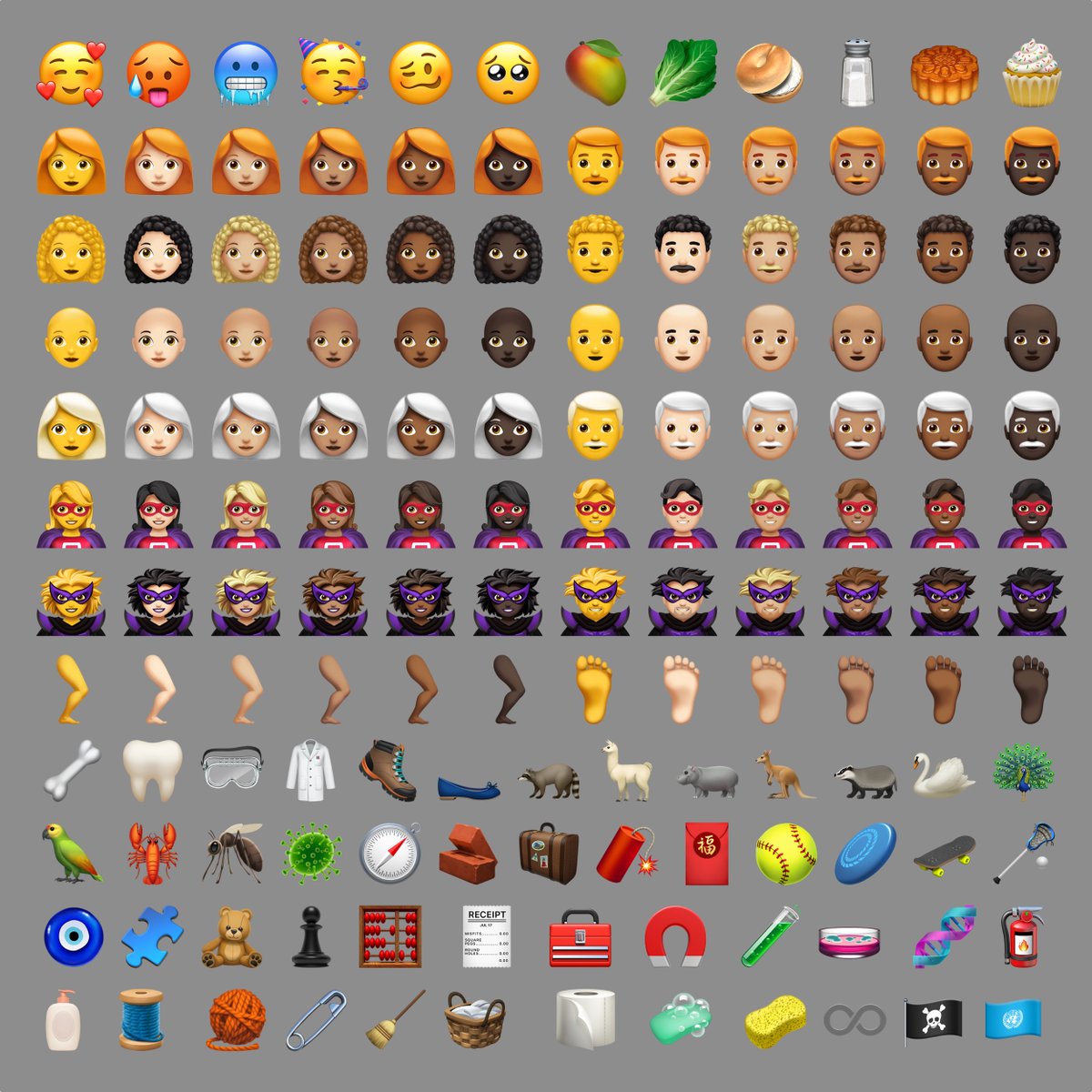
New in iOS 12.1: 🥰 Smiling Face With 3 Hearts https://t.co/6eajdvueip

New in iOS 12.1: 🥵 Hot Face https://t.co/jhTv1elltB

New in iOS 12.1: 🥶 Cold Face https://t.co/EIjyl6yZrF
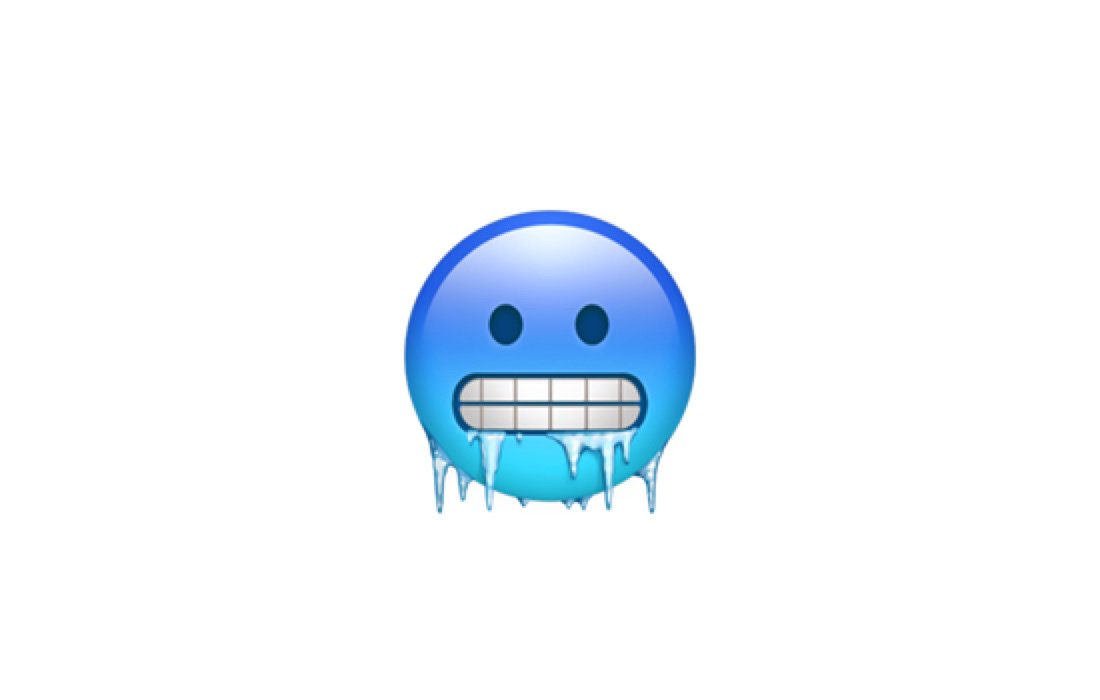
New in iOS 12.1: 🥳 Partying Face https://t.co/p8FDNEQ3LJ

🗓 Release date: October 30, 2018
📝 New Emojis: 158
https://t.co/bx8XjhiCiB

New in iOS 12.1: 🥰 Smiling Face With 3 Hearts https://t.co/6eajdvueip

New in iOS 12.1: 🥵 Hot Face https://t.co/jhTv1elltB

New in iOS 12.1: 🥶 Cold Face https://t.co/EIjyl6yZrF

New in iOS 12.1: 🥳 Partying Face https://t.co/p8FDNEQ3LJ
















